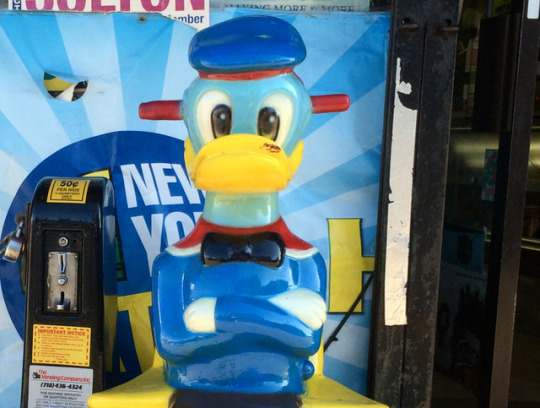
Last week I read an article in the New York Times on “Resting Bitch Face,” otherwise known as RBF. It talks about this “problem” some women have of, basically, how their face naturally defaults to something that isn’t a smile. The article, of course, makes it sound a lot worse than that, like these women are making faces that make them look “absolutely miserable” (January Jones) or “really angry all the time” (Anna Paquin, describing her own RBF), or “simultaneously bored, mad, and skeptical” (the author of the piece talking about herself). As someone who works in a still-male-dominated industry, I’ve been a victim of this idea for a long time. In my career, I have regularly been told to smile by men, or advised “Come on, it can’t be that bad,” or simply given an unfriendly answer to a question or request if it wasn’t asked with a smile (and there’s a voice that has to go with it, one that appeals appealingly, rather than simply asks, much less tells. I’ve even learned to employ the uptalk when necessary. I know). It doesn’t happen nearly as much as it used to, maybe because there are far more women who work on set now, or just because nobody wants to see me smile pretty any more now that I’m in my 40s, or because plastering on the fake happy has just become such a Pavlovic auto-response at this point that I don’t even think about it. So, as with anything else that’s gradually fallen into the category of “not really my problem any more,” I haven’t spent much time recently being personally irked by the concept of RBF. But then I happened to read this article right after working on a job debuting the pack of new Victoria’s Secret “Angels.”
I first worked on a Victoria’s Secret shoot back in the late 90s, and I remember noticing how the brand seemed to be selling not so much underwear as the concept of fantasy babedom. It wasn’t just that these ridiculously tall, skinny, and beautiful (if odd-looking; a lot of supermodels have such exaggerated features that they really do look kind of weird when you see them up close) women were wearing costumes that made them look like angels, or sexy elves (they were also shooting holiday spots), or just plain lingerie and high heels, which god knows real women wear all the time. It was that I was doing behind-the-scenes and the director, who was also a woman, was given these questions to ask for the interviews that were so ridiculous, so designed precisely to make the “angels” sound like sexual blow-up dolls that talk, that even she was laughing at them. They were along the lines of “Describe your perfect Christmas,” or, “What would you do for a man who gave you that diamond-and-jewel-encrusted bra that we’re giving away as our sweepstakes prize?” Most of the models knew exactly what they were supposed to say and said it, although a couple clearly had a hard time taking these questions seriously or seemed genuinely bewildered at being asked such stupid questions.
Well, very little has changed in the past 15-plus years, apparently, when it comes to what sells Victoria’s Secret. You can see an example of what I mean if you read any of the hundreds of interviews with any of the ten new Angels, or just go to the VS All Access page of the Victoria’s Secret website. There, under “Secrets,” you can find a series of answers to questions, ranging in nature from just kind of vapid to outright embarrassing to ask an adult, that each model has had to answer in order to, er, not exactly “humanize” her or even make her seem “real,” but maybe, I don’t know, make her real world adjacent?: “The five things you can’t live without,” “Favorite place in the world,” “Vanilla or chocolate?”, “Pink or red?”, “Boxers or briefs?” Some of the answers are entirely predictable: “The most glamorous part of your job?” is inevitably some variation on traveling the world and wearing beautiful clothes and make-up; “The least glamorous part of your job?” is almost always being away from family and being stuck in airports (only one model says something like what I would say, which is, “Nude underwear”). The answers that seem most clearly canned are for, “If you were a spice, which would you be?” (almost all said either cayenne or cinnamon), and “What did you have for breakfast?” Probably half of the models say some variation on “eggs and bacon,” which simply cannot be what a super-model typically eats for breakfast (the one who says “gluten-free toast and avocado is one of my favorite morning treats,” she’s the one, sadly, who is probably telling the truth). And what are the models like in person? Every response to the press is friendly, cute and coquettish, projecting a perfect example of who a Victoria’s Secret “angel” is supposed to be. And, yes, every smile is perfect — unless, of course, they are posing for ads in which they are not supposed to smile. The kind of hilarious aside to all this is that when models are modeling, they are only very rarely smiling, because that’s when they’re supposed to embody the other side of the madonna/whore male fantasy, the bad girl sexual temptress, and we don’t want her to be happy and friendly, because, for some reason, that’s just not sexy. Instead, they are supposed to, as Tyra Banks so famously put it, “smize,” or smile with their eyes only, inviting us in without seeming to say it out loud. A sexy look is very much a come-hither look, it engages you, it wants you, it’s about you — and really has nothing to do with her, other than saying that she’s yours.
If this is the image of a perfect woman that’s plastered all over (and it was literally that, with huge billboards and electronic ads of the models taking over Times Square that day), is it any wonder the rest of us think that there’s always something wrong with us? And the saddest thing of all? I’ve seen plenty of compilations of old ads, like “These 45 Shockingly Sexist Vintage Ads Will Make You Glad To Live In 2013.” Yes, they are absurdly horrible. But just look at any series of contemporary Superbowl ads , or ads for brands like Go Daddy and Axe Body Spray, or even just for certain products like beer, video games, and cars (because as we know, women don’t drink or play games or drive). The overall message about what women are supposed to be and do in our culture hasn’t changed all that much.
This is the thing about the whole concept of Resting Bitch Face: it’s another way of telling women that there’s something wrong with them if they aren’t some man’s fantasy. And as with with every other “defect” that has ever been pointed out to us, we internalize that and try to fix it — with Botox, with therapy, with how-to books and Cosmo’s “Ten Ways to Whatever,” or just by forcing ourselves to fucking smile even though we don’t feel like it. Would men ever have to worry about their smiles, or facial expressions or any kind, in the same way? Would it even cross their minds for most men stare at themselves in the mirror for more than a few minutes trying to fix anything about the way they look? No. And yet, we can’t just tell women not to bother the way men don’t bother, because the fact is, if we don’t fix RBF, or whatever the problem is — with our hair/clothes/make-up/skin tone/muscle tone/thigh gap/Brazilian wax not being Brazilian enough, with our demeanor or behavior or tone of voice, with someone else’s perception of any of that — we are the ones who are going to suffer. So we do what women always do: we take on the problem and we cope as best we can. It’s eerily similar, if on a totally different level, to the attitude of Sheryl Sandberg’s Lean In, a book that said women have a problem in the workplace and here’s what they can do to fix it: work on themselves.
I’m not saying that there isn’t something that needs to be fixed. I’m not even saying that women can’t or shouldn’t adapt and make life easier for themselves when necessary — clearly, when it comes to RBF, and many other things in my career and life, I have done just that. But things are only going to truly get fixed when we women get clear about something: the problem isn’t us. The problem that women have in our culture doesn’t come from what women are or aren’t doing to fit in the with that culture, it comes from the fact that our culture has a problem with women — or, at least, with real women, who are actual human beings, with individual identities and lives to lead and problems. Yes, it’s a lot easier to try and focus on and fix yourself than to try to change an entire culture (not to mention that that’s a whole other myth about America in particular: that no matter what our economic background, gender, race, country of origin, we can all independently bootstrap our way to success here in the good old USA. Yeah, right). One might even say that changing this culture is damn near impossible. But it does happen. Those ads from the past few years, sure, they suck, but no, not with the same degree of suckitude as the ones from the 30s, 40s, 50s, and 60s. The transition in how this country has viewed gay marriage in just the past five years shows that there can be huge cultural transformation in the way we look at sexual preference and gender roles.
But the first thing that needs to happen is that women have to be very clear about the fact that rape and sexual assault, pay inequality, underrepresentation and discrimination in the workplace, eating disorders and bad body image, being unable to afford family leave with pay or proper health care and for fuck’s sake birth control, just like, yes RBF, is not our fault. It’s not something that we need fix about ourselves, or something that we are doing wrong. And unlike all of those other things, of course, RBF isn’t even a real problem.
In other words, American culture, stop making women the problem. It’s not us, it’s you.
